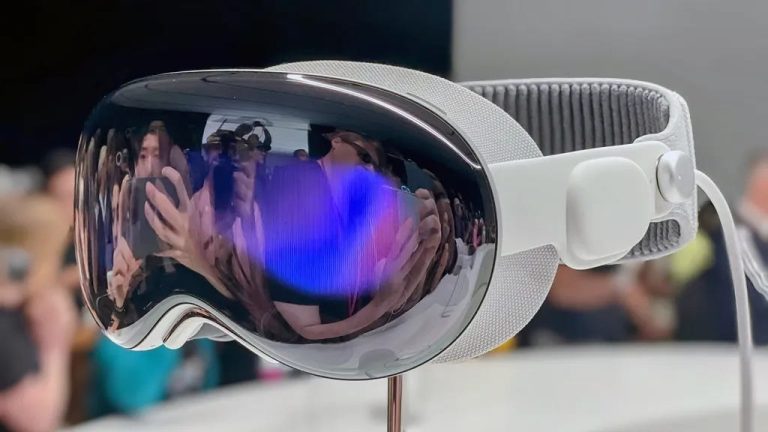In an age where technology is not just a tool but a way of life, I had the opportunity to experience the Apple Vision Pro, a device that not only promises to revolutionize how we interact with the digital world, but also has profound implications for the technology job market.
Let's dive into how this innovative product could burst the tech jobs bubble, and reshape the future of employment in the tech sector.
Apple Vision Pro, launching in early 2024, represents a bold leap into mixed reality. At a premium price of $3,499, it's a mix of augmented and virtual reality.
But beyond the technical specifications, Vision Pro heralds a transformative shift in how we perceive and interact with technology, which could impact the tech job market in a big way.
My first-hand experience with Vision Pro has been nothing short of transformative. As a spatial computer, it seamlessly integrates digital media with the real world, using motion gestures, eye tracking, and speech recognition to interact.
This level of integration and immersion indicates new possibilities and applications that extend beyond gaming and entertainment.
Introducing Vision Pro isn't just about a new tool; It's about a new wave in technology that could deflate the tech jobs bubble.
Here's how:
- Shift in demand for skills: Vision Pro's mixed reality technology requires a new set of skills. Software developers now need to think in 3D, design for spatial computing, and understand complex user interactions. This shift may make some traditional technical roles obsolete while creating demand for new skill sets.
- Remote work revolution: With tools like Vision Pro, remote work can be reimagined. Virtual meetings can become more immersive and interactive, which may reduce the need for physical office space and associated functions.
- Automation and AI integration: Advanced AI capabilities in Vision Pro, such as gesture recognition and eye tracking, point to a future in which automation becomes more widespread. This could mean a decline in jobs that require manual or repetitive tasks, even in technology sectors.
- New market, new opportunities: On the other hand, the emergence of mixed reality platforms opens up new labor markets. Creative roles in AR/VR content creation, user experience design for spatial computing, and specialized hardware development are just the tip of the iceberg.
The technology industry, once thriving with unchecked growth and speculative investment, now faces a reality check.
The bursting of the bubble, as we saw in the recent market downturn, was a wake-up call. Over-investment and overvaluation of startups without sustainable business models have led to an unstable situation.
Apple's Vision Pro, by introducing groundbreaking technology, could exacerbate this bubble bursting. As companies seek to adapt to this new technology, there may be a significant adjustment in jobs and skills within the technology industry.
The focus may shift from traditional software development to more innovative, mixed reality-oriented roles.
As I explored the Vision Pro's mixed reality, I realized that this was more than just a technical upgrade; It was a paradigm shift. The way we work, play and interact is on the cusp of transformation, and with it the employment landscape is bound to evolve.
For those in the tech industry, the message is clear:
“Adapt or risk obsolescence”
Embracing new skills, remaining flexible, and being open to continuous learning is no longer just desirable; They are essential for survival in this rapidly changing landscape.

